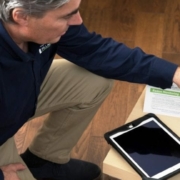The beginning of a new year is more than just a time for personal resolutions; it’s also a great opportunity to reassess the condition of your home and start the new year with a fresh look at your home. After the hustle and bustle of the holiday season, things tend to slow down, making it easier to focus on home maintenance tasks that might have been overlooked throughout the year.
A home inspection at the start of the year allows you to address small issues before they become big problems. Whether it’s checking your HVAC system, inspecting your roof, or testing your home’s water quality, taking proactive steps can save you time, money, and stress in the long run. Let’s take a closer look at why you’d want to start the new year with a fresh look at your home.
Why Periodic Home Inspections Are Essential
Your home is one of the largest investments you’ll ever make, and like any investment, it requires consistent care and attention. Periodic inspections help you:
- Identify Issues Early: Catching problems early can prevent costly repairs later.
- Ensure Safety: Systems like plumbing, heating, and electrical wiring need to be functioning properly to avoid accidents.
- Improve Energy Efficiency: An inspection can highlight areas where energy is being wasted, helping reduce utility bills.
- Increase Home Value: A well-maintained home retains its value better over time.
Key Areas to Inspect
While a professional home inspection is always a good idea, there are several areas you can check on your own to ensure everything is in good working order.
1. HVAC Systems
Your heating, ventilation, and air conditioning system works hard throughout the year. Start the new year by changing your filters, inspecting ducts for leaks, and ensuring the thermostat is functioning correctly.
2. Plumbing
Leaks, drips, and water pressure issues are common plumbing problems. Check under sinks, around toilets, and in basements or crawl spaces for signs of moisture or water damage.
3. Roof and Gutters
Inspect your roof for missing shingles or damage caused by winter weather. Clean out gutters to prevent blockages that could cause water damage to your home’s exterior and foundation.
4. Windows and Doors
Drafty windows and doors can significantly impact your home’s energy efficiency. Check seals, caulking, and weather stripping, and replace them if needed.
5. Electrical Systems
Loose outlets, flickering lights, and frequently tripped circuit breakers are all signs of potential electrical issues. If you’re not comfortable inspecting these yourself, consider hiring a licensed electrician.
Declutter and Refresh Your Living Space
Beyond system checks, when you start the new year with a fresh look at your home it can have significant mental and emotional benefits. Decluttering your space, reorganizing rooms, and adding fresh decor can make your home feel brand new.
Decluttering Tips:
- Donate items you no longer use.
- Create designated storage areas for frequently used items.
- Take it one room at a time to avoid feeling overwhelmed.
Small Upgrades That Make a Big Impact:
- A fresh coat of paint.
- New light fixtures.
- Updated cabinet hardware.
Create a Home Maintenance Calendar
One of the best ways to stay on top of home maintenance is to create a calendar for regular check-ups. Include seasonal tasks like servicing your HVAC system in the spring and fall, gutter cleaning before the rainy season, and checking smoke detectors every six months.
Having a clear schedule ensures nothing falls through the cracks, and it spreads out maintenance tasks throughout the year, making them more manageable.
When to Call in the Professionals
While DIY inspections and repairs are great for smaller tasks, there are certain areas where professional expertise is essential. Consider hiring professionals for:
- Annual HVAC inspections
- Roof assessments
- Water quality testing
- Electrical repairs
These professionals have the experience and tools to identify hidden issues and provide solutions before they escalate.
Final Thoughts About Starting the New Year with a Fresh Look at Your Home
Your home is more than just a structure; it’s where your family creates memories, feels safe, and finds comfort. When you start the new year with a fresh look at your home you’re making an investment in your family’s well-being and your property’s value.
Take the time this year to inspect, repair, and refresh your space. Whether you handle tasks yourself or hire professionals like CMS Home Inspection, you’ll enjoy peace of mind knowing your home is in great shape for the year ahead.
Make 2025 the year you prioritize your home’s health and functionality. A little effort now can go a long way toward creating a safe, efficient, and beautiful living environment for you and your loved ones. Let’s connect if you want to schedule a home inspection.


